How to make your grandma’s brisket — and make it vegan
Micah Siva talks ‘Nosh,’ her new cookbook on veggie-centric Jewish food
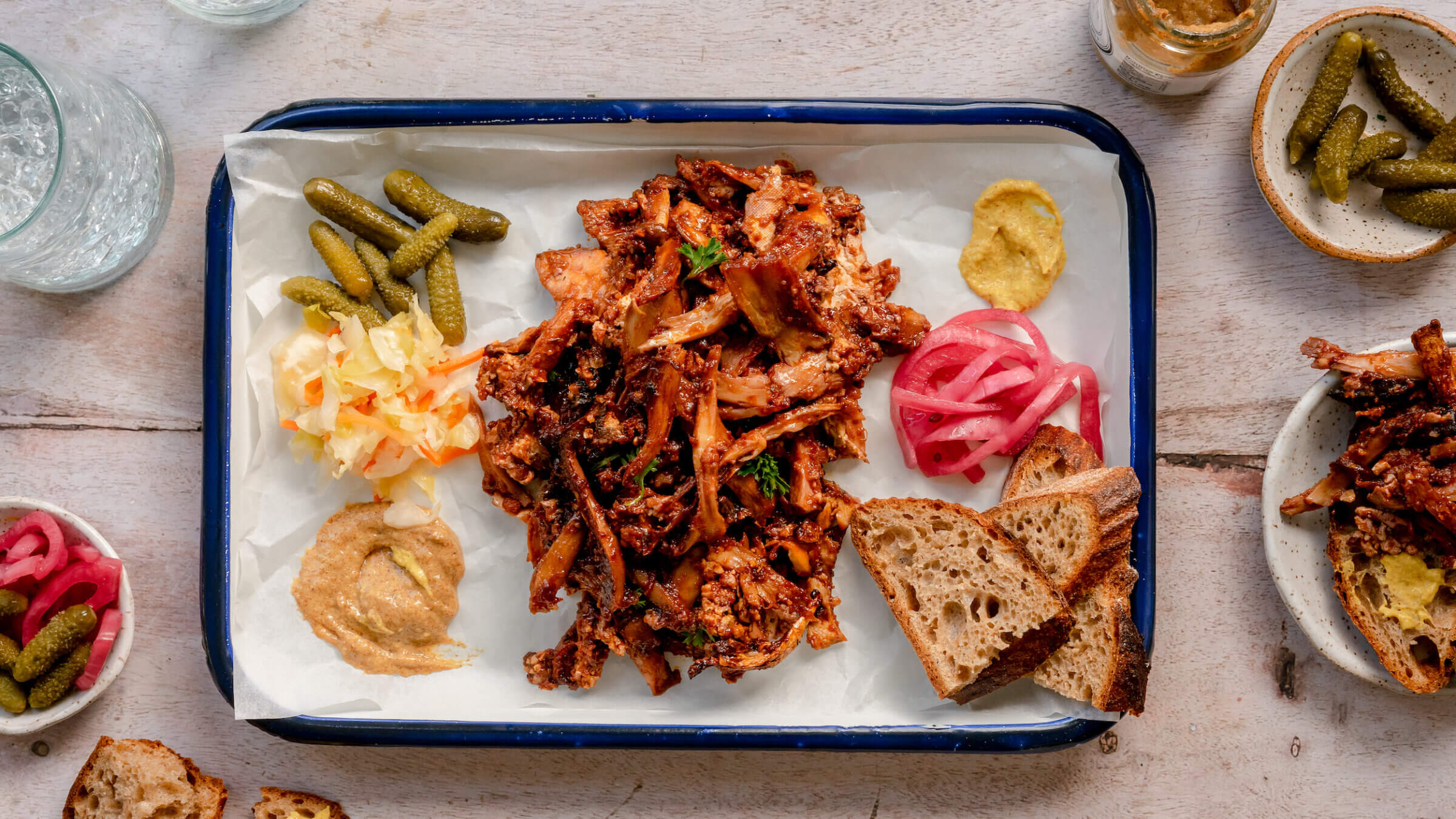
Micah Siva drew on her mother and grandmother’s beef brisket recipe when she developed her Savory Pulled Mushroom and Tofu “Brisket.” Courtesy of Micah Siva
All over the diaspora, Jews love food. And in many cases, the dishes that we love the most, from gondi, Persian Jewish meatballs, to Indian-Jewish coconut fish curries, to Ashkenazi roast brisket, rely heavily on meat, fish, eggs and dairy. Those of us who want to limit our consumption of animal products, whether for our health, animal welfare, or the environment, may feel that we’re faced with a dilemma: eat a plant-based diet and forget the foods that make us feel Jewish, or eat grandma’s chicken soup and go against our morals.
Dietitian and recipe writer Micah Siva believes that we can have our (vegan) cake and eat it too. “Modernizing your classic recipes doesn’t make them any less special,” she told me over a video call from her home in San Francisco. Vegetarian dishes “are oftentimes the most exciting dishes out there, because you’re not relying on just a piece of meat.”
Her new book, Nosh: Plant-Forward Recipes Celebrating Modern Jewish cuisine, is a 250-page piece of evidence in support of her claim. With creative takes on already-vegan Jewish classics, like her smashed cucumber dill salad and beet baba ghanouj, Siva highlights the fact that Jews have been eating their vegetables for ages. “Kosher food is like the O.G. dairy-free movement,” she said, adding that Jewish cooks have long explored dairy- and meat-free cooking and baking in keeping with halachic law.
And for the dishes that are hard to picture without meat, Siva reimagines them, marinating celeriac in blended beets, liquid smoke, and spices to replicate the color and taste of pastrami, and shredding and roasting jackfruit to achieve shawarma’s satisfying chew.
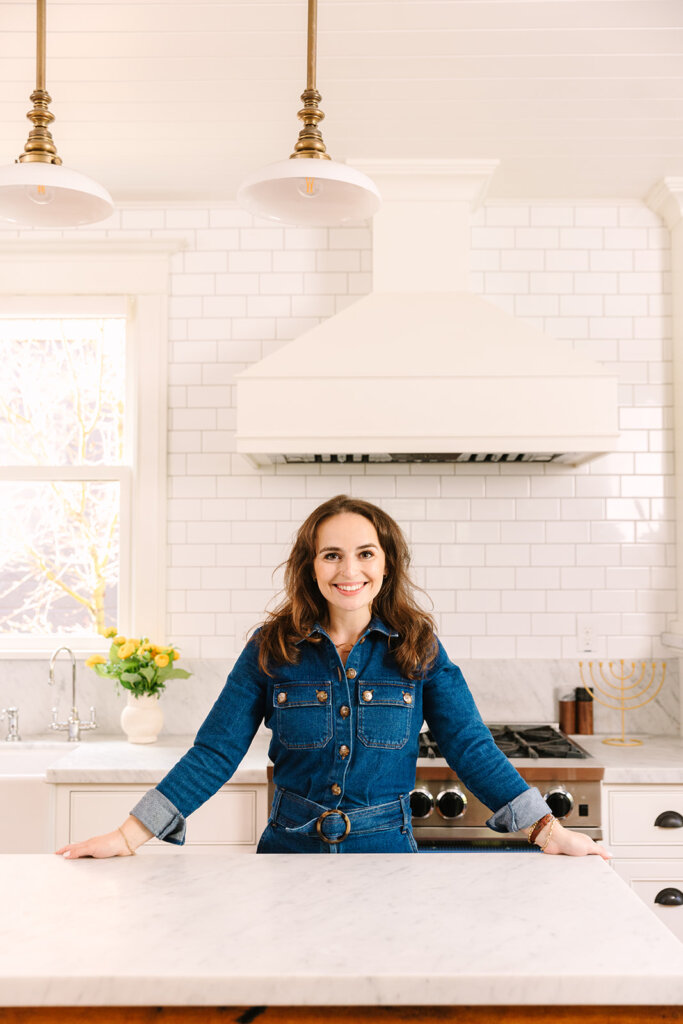
For Siva, this topic is a personal one. She grew up in Western Canada in a kosher-observant family with a grandmother who would ply her with roast chicken and schnitzel on visits. As a preteen, she became a vegetarian to alleviate health problems, and soon was making her own meals at Shabbat and Rosh Hashanah dinners. Along the way, she discovered that she loved cooking. She enrolled in New York’s Natural Gourmet Institute, a plant-based culinary school, and went on to teach people how to cook satisfying vegetarian food for themselves as a dietitian and recipe developer.
With Nosh, she hopes to “meet people where they’re at” with practical, gentle guidance for the home cook. The book’s introduction includes a section titled “But How Are You Going to Get Your Protein?” (beans, grains, and nuts are among her many answers), another titled “Substituting Dairy Items to Make It Pareve,” and a “Shabbat Matrix” that lays out axes of effort level and time, providing plant-based Jewish meal options for each possibility.
“I hope that the cookbook appeals to vegans and vegetarians, but I also hope it appeals to meat lovers just looking for a different vegetable side for their Shabbat dinner,” she said.
I talked with Siva about the plant-based history of Jewish cuisine, the joys of tahdig latkes, and the challenges of making vegan matzo balls. This interview has been edited for length and clarity.
How did you start eating, and cooking, plant-based foods?
When I was around 11 or 12, like many Ashkenazi Jews, I was experiencing some health and digestive issues. And I told my mom I wanted to be a vegetarian. She was anxious about it, not sure what to feed me. Her first thought was, “What are you going to eat during the holidays?”
She hired a dietician to come to the house, and teach us about vegetarian cooking, to tell us different ways to get my protein — between beans and tofu. At that time, those were essentially our two options.
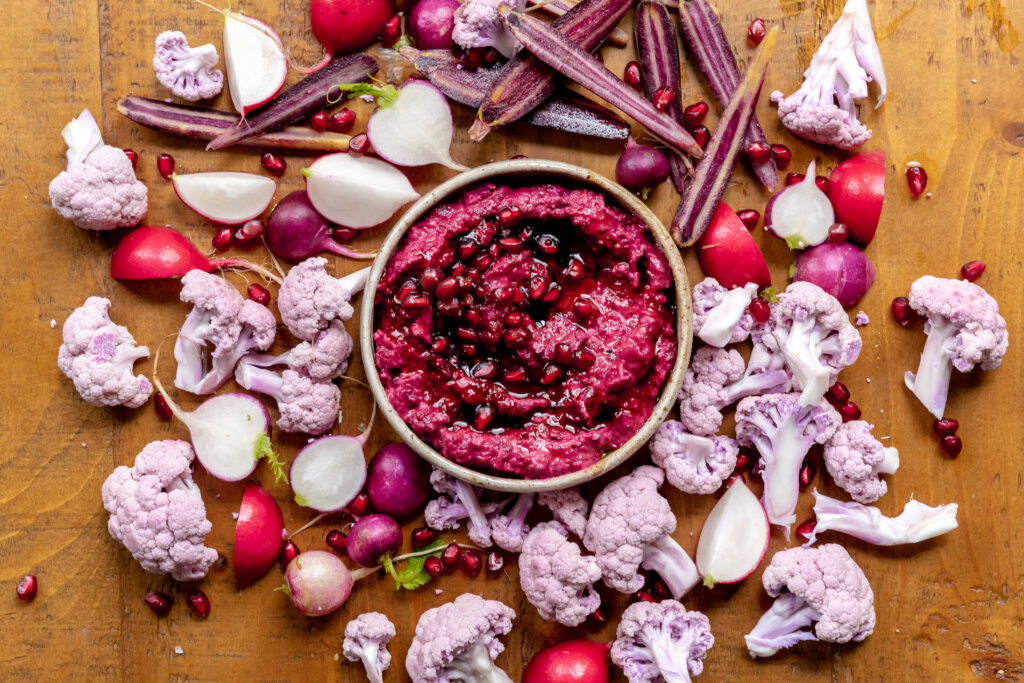
If they were eating chicken, I was on my own to make the vegetarian part of the meal. That really got me interested in vegetarian cooking, because it was kind of a do-or-die situation. I found that cooking was a really fun and creative way for me to express myself.
A big part of it was the health benefits of being vegetarian: It made me feel better; a lot of my digestive issues kind of went away.
Why do you say your cooking is “plant-forward” rather than vegan?
I’ve found, as a dietitian, that when we subscribe to saying “I’m vegan” or “vegetarian,” it can be a hindrance more than something that’s positive. Some people can make choices against their own health needs.
Also, when people think of a vegan diet, they think it has to be an all-or-nothing situation: it’s either you’re vegan, or you’re a meat eater.
But if you’re eating in a plant-forward way, and there’s a dish that’s really important to you, or that makes you feel really good, that’s meat-based, then having that as a smaller part of your diet is totally fine. With that flexibility, we can meet people where they are.
How did you get interested in cooking Jewish food?
I grew up watching my grandmother Eva in the kitchen, in awe. I thought she was a magician. She’d make chicken soup when we’d visit her. She’d make schnitzel or roast chicken — any kind of pie you could ever imagine. She was that quintessential Jewish bubbe who was like, “If you don’t have seconds, you don’t love me.”
We didn’t focus on Jewish food while I was vegetarian, because we just didn’t know how to do it. So, for the holidays, they would all be eating brisket, and I would just bring baked tofu for my main course.
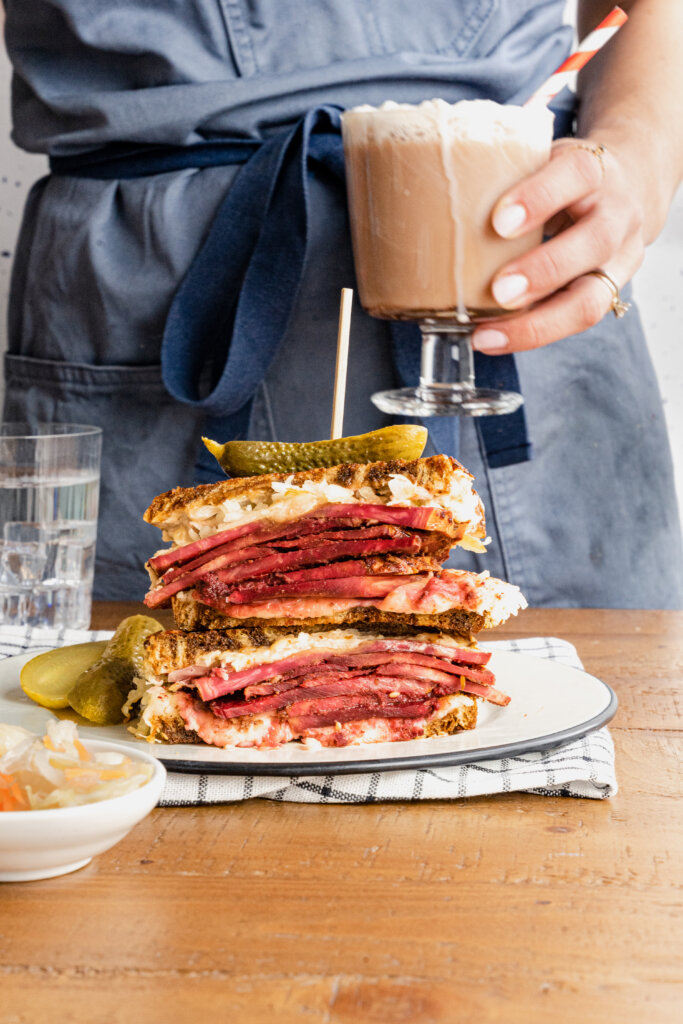
The big turning point for me was in 2018. My husband and I moved to London that March. And then that September, my grandmother Eva passed away. And I couldn’t get back to Western Canada in time. That day, the only thing I could think of was making her recipe for kreplach. I spent the entire day just making kreplach and crying. I said to myself: “This food is so important to me. This is how I feel connected to people. This is how I feel a sense of community, no matter where I am.”
Some of the dishes in your book, like baba ghanouj, are traditionally vegan. Does Jewish cuisine have a plant-forward history?
I think that when I say Jewish food, people automatically think of brisket, pastrami, smoked salmon, all of these animal-based or animal/fish-based dishes. But you don’t necessarily think of the dishes that you need for a dairy meal. Or for a pareve meal.
I think that kosher food is like the O.G. dairy-free movement. When we were small, we were having mystery whip on our dairy-free desserts when we had a meat meal. It’s only recently that margarine, or these plant-based butters, have gotten their glow-up, when really it’s just what we’ve been doing for years.
Nosh features foods from all over the Jewish diaspora. Can you talk about why that’s important?
If you think about foods that aren’t just Ashkenazi Jewish food, and think about the diaspora, so many dishes are naturally vegan or vegetarian. My family is Ashkenazi, and my husband’s family is Sephardic, and he and I have traveled extensively. We’re not just thinking of Jewish food as Katz’s Deli. We’re thinking of Jewish food as this wide breadth of dishes, because of everywhere that Jews have been persecuted from, and kicked out of, and had to move to, and have had to reinvent their cuisines based on what’s available to them.
To be able to pay homage to Jewish diversity was really important. And also thinking about people who, like me, are from outside of the United States, or are married to a Jew from another part of the diaspora. Or are married to someone in an interfaith relationship.

Some recipes in Nosh even mix foods from different parts of the diaspora. What inspired that?
A recipe that comes to mind is the tahdig latkes. They came from a conversation that I had around Hanukkah with a good friend of mine who is a Persian Jew. She makes tahdig [a Persian crispy rice dish], and it’s delicious. I wanted to find a way to honor that dish.
This is a dish inspired by tahdig that’s a little bit more approachable, because it just takes less time. What a fun way to have a vegan — and also gluten-free by default — dish, that you can enjoy for Hanukkah, to learn about a place that Jews come from and honor Persian Jews.
What do you think is the biggest challenge a Jewish cook might face in switching to a more plant-based diet?
I think the biggest challenge is the memories and emotions tied to some of the dishes that we’re used to. I’ve spoken to people who say, “I can give up meat other days, but I still want my brisket.” Or, “I still want my chicken soup.”
That’s why in Nosh, I have some plant-forward dishes that replicate the flavors of those [traditional] dishes. I have my brisket in there. I don’t think you can have a Jewish cookbook with main dishes and not have brisket. I’m pretty sure they’d sue me. But maybe they’ll sue me anyway because I made it with tofu and mushrooms.
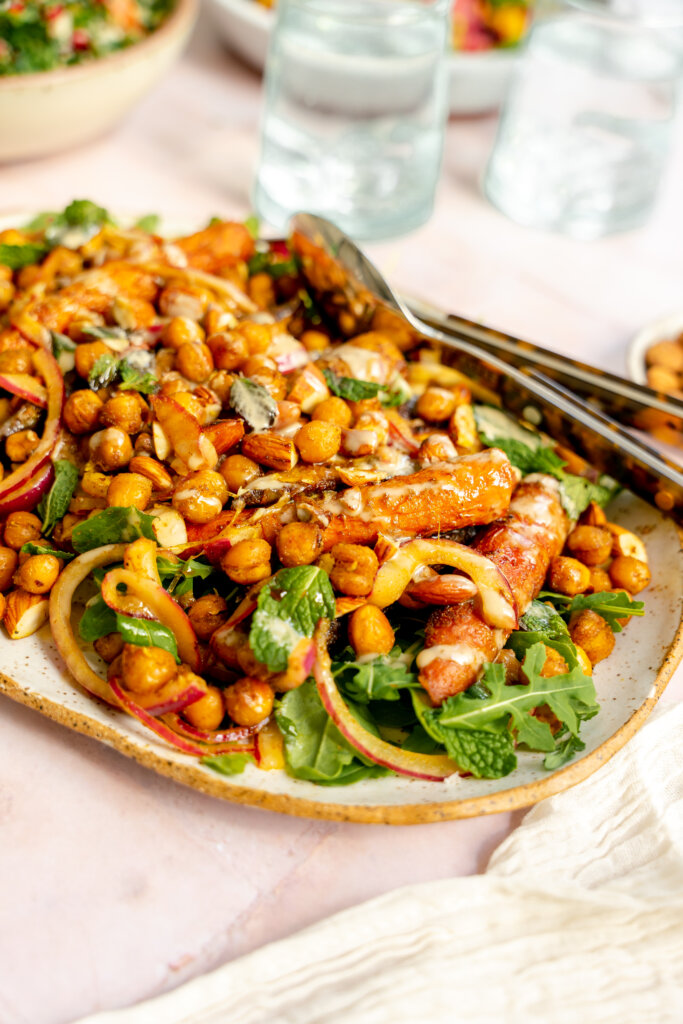
Could you share a memorable, plant-based Jewish meal that you cooked recently?
This Hanukkah, my baby had just been born. My parents came up to see the baby and my mom and I actually made the tofu and mushroom brisket recipe from the cookbook. The recipe is one of my favorites because it takes the marinade that my grandmother and mom used to make for brisket, updates it a little, but uses it on something vegetarian. My mom made her classic latkes and a simple salad.
And I mean, my dad’s a meat lover. He called me today excited that he’s gonna make lamb chops for dinner. But my dad loved the brisket. My mom loved the brisket. We all loved this vegan tofu and mushroom brisket and ate it at 4:30 p.m., while there was a baby crying that we’d only met six days before. It was the most special Hanukkah ever.
Have your family and friends always embraced the plant-based Jewish food that you make?
I have that classic bubbe who would say, “It’s just a little bit of beef,” or, “Chicken’s not meat.” And there would always be those comments, like, “How is she gonna get her protein?”
But within my immediate nuclear family, and when I’ve hosted dinners, everyone is so excited to have a plant-based meal. I somehow got myself wrapped into making three Seders this year, because we didn’t have enough seats at the table for two. Each night was a different vegan Passover meal. And everyone loved it. I’m finding that people already are eating more vegetables than their parents likely did. And oftentimes they just don’t know how to make it something that they crave.
What was the most challenging recipe to develop for this book?
The most challenging recipe was the vegan matzo balls. It took me about 20 tries. I could have eaten a bowl of tear soup by the time I figured it out. I learned that one steams a vegan matzo ball to keep them intact before adding them to soup, instead of boiling it in broth. I swear to God, I could have bought stock in Manischewitz and made a lot of money from all the matzo meal I purchased.
Do you have a message for Jewish cooks out there who might be thinking about adapting a plant-based diet, but aren’t sure how?
The meaningful part about the food is sharing it with people around you, and feeling good about what you’re eating, and enjoying it and schmoozing together. So if you’re thinking that you’re doing a disservice to your bubbe or your zayde, or whoever it is, just taking the time to be Jewish or celebrate a Jewish holiday is honoring them, no matter what you’re eating. Modernizing recipes can help carry on the tradition for a long time.
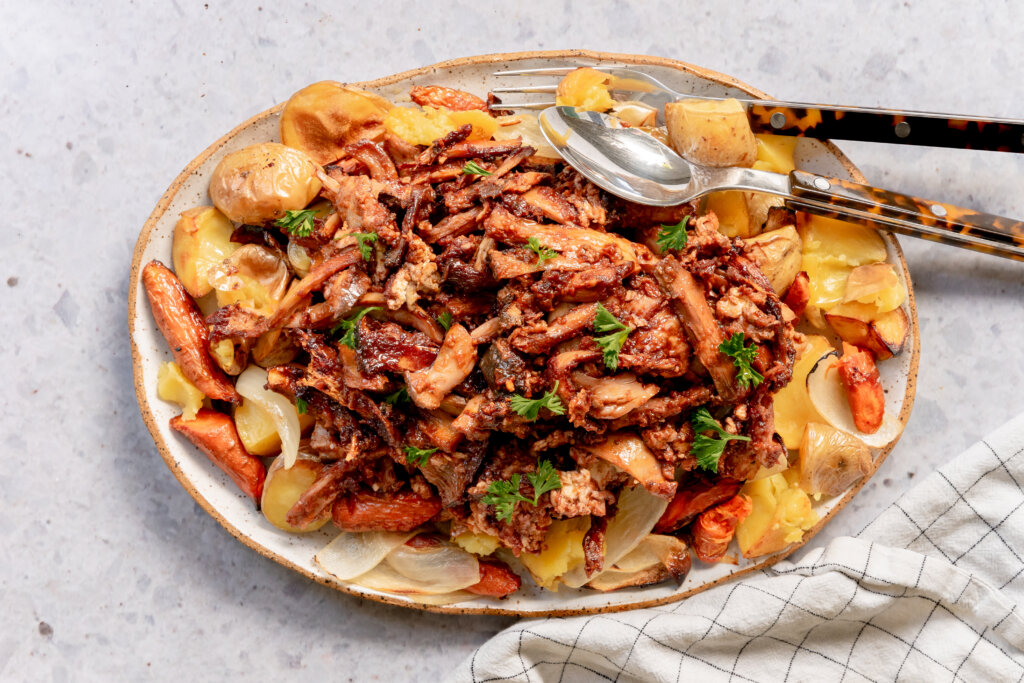
Savory Pulled Mushroom and Tofu “Brisket”
The following recipe was adapted with permission from Nosh: Plant-Forward Recipes Celebrating Modern Jewish Cuisine by Micah Siva.
Ingredients
'Brisket'
- 1 ½ pounds king trumpet mushrooms
- 1 (14-oz) block extra-firm tofu
- ½ cup olive oil
- 3 tablespoons soy sauce, or gluten-free tamari, if preferred
- 2 tablespoons smoked paprika
- 1 tablespoons garlic powder
- ½ teaspoon black pepper
Sauce
- 1 medium yellow onion, peeled and quartered
- 4 garlic cloves, peeled
- 2 cups dry red wine
- 1 cup ketchup
- 2 tablespoons soy sauce
- 2 tablespoons Dijon mustard
- 1 teaspoon dried thyme
- 1 teaspoon mustard powder
- 2 tablespoons chopped fresh parsley
Directions
- Preheat the oven to 400 F.
Make the 'brisket'
- Use two forks to shred the mushrooms into strips. Put them in a large bowl.
- Drain the tofu. Using the largest holes of a box grater, grate the tofu into the bowl with the mushrooms. Add the olive oil, soy sauce, smoked paprika, garlic powder, and black pepper and toss with the mushrooms and tofu until well combined.
- Transfer the mushroom and tofu mixture to a large rimmed sheet pan and spread it into an even layer. Roast for 30 minutes, or until golden. Set aside.
Make the sauce
- While the mushrooms are roasting, in a blender or food processor, puree the onion, garlic, red wine, ketchup, soy sauce, Dijon mustard, thyme, and mustard powder until smooth.
- Pour the sauce over the roasted mushroom and tofu mixture, stirring until evenly distributed. The liquid will evaporate while it roasts, making a thick sauce.
- Return the sheet pan to the oven and roast for 30 to 35 minutes, stirring halfway through, until the mushrooms and tofu are deep brown.
- Serve with roasted potatoes or latkes, or try it in a challah bun and slaw for a play on a “pulled beef” sandwich. Top with the chopped parsley.
Note:
- Store in airtight containers in the fridge for up to 4 days or in the freezer for up to 3 months. To reheat, thaw and transfer to a baking dish. Bake at 350 F until heated through. To make this kosher for Passover, be sure to use a Passover-friendly soy sauce alternative.
Variation
- For a less traditional, yet very tasty, flavor more similar to a pulled barbecue “beef,” in lieu of ketchup, try adding your favorite barbecue sauce.





















